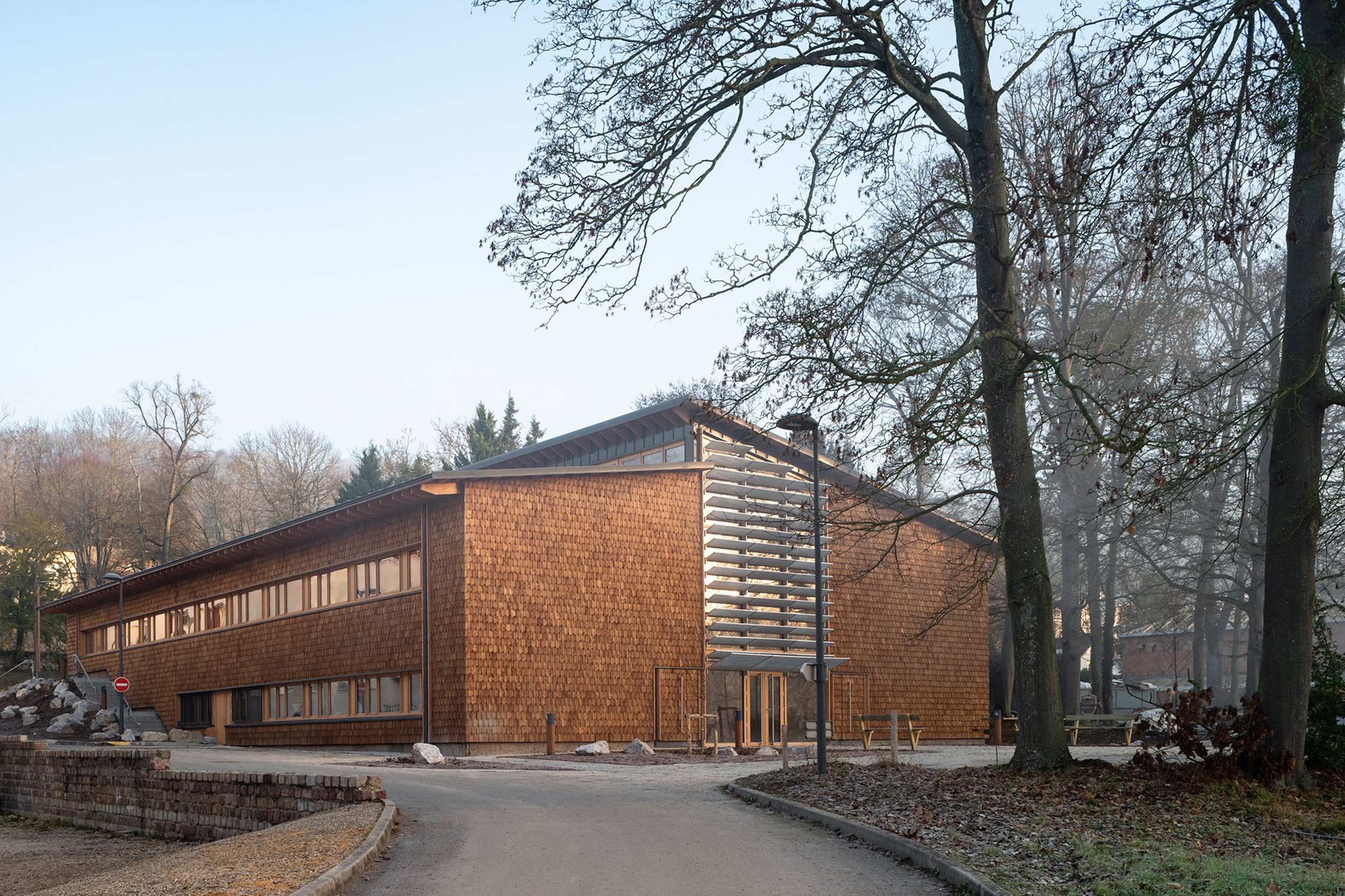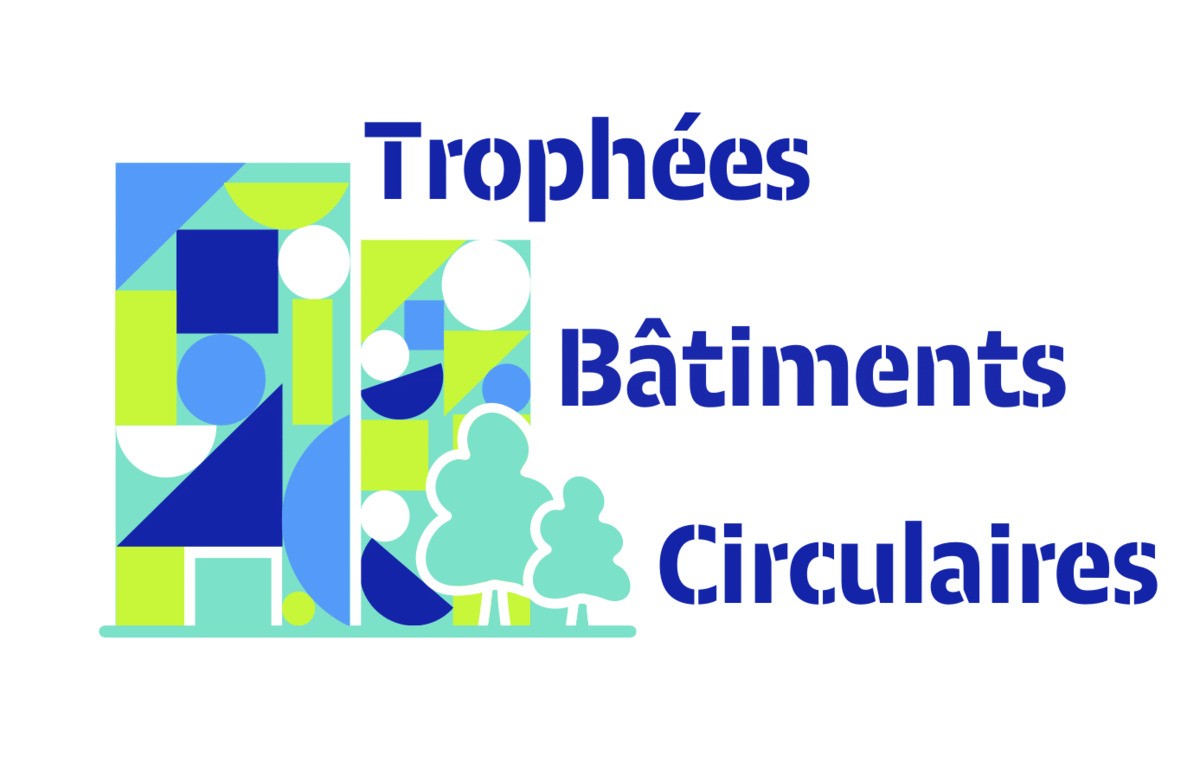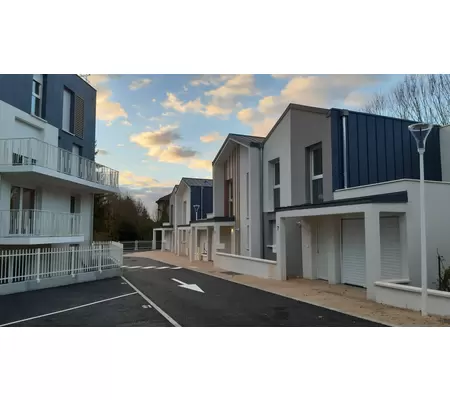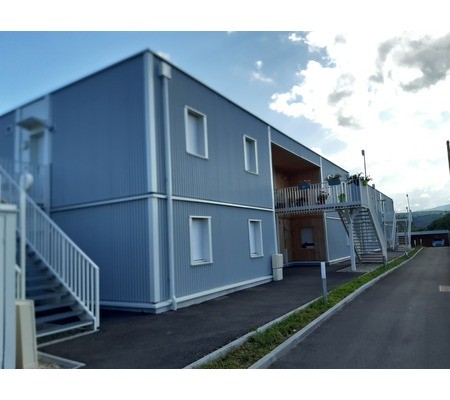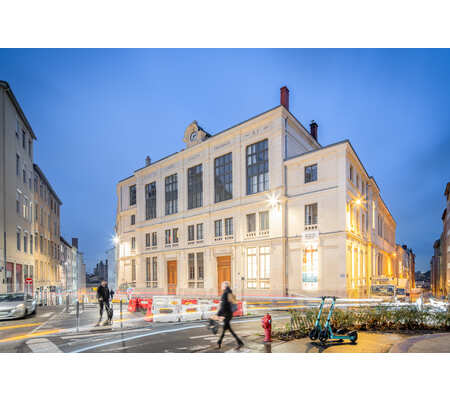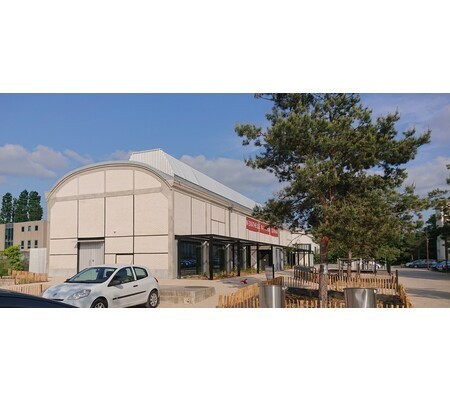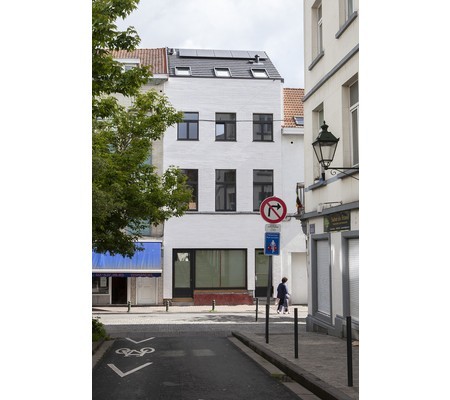Gilbert Raby centre (France)
Last modified by the author on 24/05/2023 - 16:02
New Construction
- Building Type : Public or private hospital
- Construction Year : 2022
- Delivery year : 2023
- Address 1 - street : 2 avenue du Maréchal Joffre 78000 MEULAN-EN-YVELINES, France
- Climate zone : [Cfb] Marine Mild Winter, warm summer, no dry season.
- Net Floor Area : 877 m2
- Construction/refurbishment cost : 3 230 000 €
- Number of Bed : 15 Bed
- Cost/m2 : 3683.01 €/m2
-
Primary energy need
15 kWhep/m2.an
(Calculation method : RT 2012 )
The project consists of the construction of a new two levels building hosting the functions of therapeutic workshops, laundry rooms, day hospital and pharmacy. The building is inserted into the slope of the land, giving level access to the two floors which have entirely independent operations. On the ground floor, the therapeutic workshops and the laundry rooms are intended for patients accommodated on the site and accessible from the North. On the other floor, the day hospital welcomes patients in follow-up care on a daily basis, from the South. The use of the pharmacy, also on the ground floor to the west, is reserved for hospital staff. A wide bioclimatic interior street provides access to all the premises on two levels while offering a climatic transition space between the exterior and the interior. This sustainable design is associated with a wooden structure, raw earth bricks inside and bio-sourced wood fiber insulation.
The project is set up in a plot now occupied by several buildings forming the Gilbert Raby centre, a private health establishment of collective interest participating in the public hospital service, specialising in addictology and the treatment of addiction. It is administered by the Elan Retrouvé Foundation. The building slips into the slope towards the Seine, under a two-sided roof. The project develops a simple and functional architecture while remaining compact and robust, highlighting a sober building in its structure and forms. Visually, the project blends harmoniously into the wooded context with which it resonates through a sleek design but also through its materiality: the exposed wooden structural elements of the cantilevered roofs, the exterior cladding made of shingles of pre-greyed larch, highlighting French know-how, and the varnished wooden joinery naturally echoes the context.
Inside, the logic of interaction with the natural elements is preserved: it has indeed been proven that evolving in contact with natural elements induces a level of well-being higher by 15%. The workshops and medical offices are organised in symmetry around a generous interior circulation, largely illuminated by the set of roofs, which constitutes the nerve center of the bioclimatic functioning of the project. The first step is to make it a true autonomous interior/exterior transition space by offering generous visual continuity to the exterior and the Seine through the North and South glazed facades. The organisation of the premises around the bioclimatic circulation has been thought out according to the uses accommodated in such a way as to optimize the flows and deal with the source of the thermo-acoustic constraints. Unheated, it is designed to be temperate in winter by being largely illuminated by the interplay of roofs: this accentuates the effect of freedom and openness sought via a carefully sized glazed strip zenithal and protected by removable blinds. Its seasonal thermal stability is ensured by its raw earth brick walls coupled in summer with a logic of discharge by night ventilation independent of the other premises via motorised dampers integrated in the North and South curtain walls and in the vertical roof strip.
From a constructive point of view, a logic of frugality was sought: on the ground floor, the semi-buried configuration of the building led to the preference for a reinforced concrete structure less sensitive to water than wood. External Thermal Insulation wood wool is then made in order to take advantage of the thermal inertia of the concrete and eliminate the risk of condensation in the walls. On this concrete structure of the ground floor rests an aerial wooden structure. The continuous shape of the facade allows easy implementation of the works as well as a reduction of thermal bridges.
Thermal performance (winter and summer) is ensured by a high-performance envelope made of biosourced materials (wood wool, prefabricated wood panels) which provide insulation in winter and thermal phase shift in summer. The rationalisation of construction methods simplifies at the source the continuous implementation of airtightness works. In addition, a thermal airlock has been planned on the North entrance which limits the entry of parasitic air with each new arrival of users and the generous curtain walls are in triple glazing to the North in order to limit heat loss on this non-sunny orientation.
Building users opinion
The hospital staff has a very positive feedback on the soothing atmosphere of the establishment linked to the strong presence of biosourced materials and raw earth bricks.
If you had to do it again?
The implementation of the reuse of earth with raw earth bricks was put in difficulty at the start because no company competent in the implementation of earth responded to the call for tenders (mainly because the site was too far for them). We therefore opted for an alternative solution: to offer specific training in the implementation of raw earth products (training provided by Cycle Terre) to a traditional masonry company. This training went very well and allowed the masons to gain skills, and the raw earth site to be carried out very well.
BIM approach
The BIM approach (Revit modelling) was implemented from the start of the studies until the end of the construction site.
Photo credit
Cyrille Weiner
Contractor
Construction Manager
Stakeholders
Other consultancy agency
Mizrahi
Eric Bournique
https://www.sasmizrahi.comStructures calculist
Sylva Conseil
Antoine Baugé
https://www.sylva-conseil.frThermal consultancy agency - Wood structure
Other consultancy agency
180 degrés ingenierie
Julien Coeurdevey
https://180ingenierie.comThermal consultancy agency environment, biosourced materials
Other consultancy agency
IPCS
Jérémy Guillemin
https://www.ipcs-idf.comType of market
Realization
Allocation of works contracts
Separate batches
Energy consumption
- 15,00 kWhep/m2.an
Systems
- Others
- Individual electric boiler
- No cooling system
- Double flow heat exchanger
- No renewable energy systems
Risks
- Flooding/Slow flood
- Geotechnical drought (Clay soil shrinkage and swelling)
Urban environment
Construction and exploitation costs
- 3 230 000 €
Circular economy strategy
- Maximization of quantities on targeted products
- Maximization of the carbon gain
- Maximization of the mass of waste avoided
Reuse : same function or different function
- Structural works
- Partitions
- others...
- Partitions and Structural Work: 250 m² of raw earth brick walls
- Interior finishes: 220 m² of earthen plaster.
Logistics
- No problem of storage, supply correlated to the progress of the works
Insurance
Economic assessment
- 90 €
- Purchase by the company from a reuse platform
Communication
Circular design
Additional information (PDF documents)
Indoor Air quality
Comfort
Quality of life and services
The project develops a simple and functional architecture while remaining compact and robust, highlighting a sober building in its structure and forms. Frugality, bioclimatism, biosourced and reused materials have been integrated throughout the design of the project. It has thus been designed in such a way as to promote the comfort of the interior environment, in particular thanks to:
- Harmonious integration with the surrounding nature;
- An interclimatic circulation allowing seasonal thermal stability;
- A high-performance envelope made of biosourced materials that provide insulation in winter and thermal phase shift in summer.
Carbon sink
- Wood frame
- Insulation: wood fibre, wood wool
- Joinery: wood




